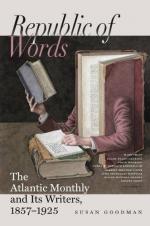of her jewels, very secretly to London, by his trusty
agent, Sir Nicholas Elphinstone, who undertook to
negotiate their sale, with the assistance of Throgmorton,
to whom he was directed for that purpose. As
these pearls were considered the most magnificent
in Europe, Queen Elizabeth was complimented with the
first offer of them. ‘She saw them yesterday,
May 2nd,’ writes Bodutel La Forrest, the French
ambassador at the Court of England, ’in the presence
of the Earls of Pembroke and Leicester, and pronounced
them to be of unparalleled beauty.’ He
thus describes them: ’There are six cordons
of large pearls, strung as paternosters; but there
are five-and-twenty separate from the rest, much finer
and larger than those which are strung; these are
for the most part like black muscades.
They had not been here more than three days, when
they were appraised by various merchants; this Queen
wishing to have them at the sum named by the jeweller,
who could have made his profit by selling them again.
They were at first shown to three or four working
jewellers and lapidaries, by whom they were estimated
at three thousand pounds sterling, (about ten thousand
crowns,) and who offered to give that sum for them.
Several Italian merchants came after them, who valued
them at twelve thousand crowns, which is the price,
as I am told, this Queen Elizabeth will take them
at. There is a Genoese who saw them after the
others, and said they were worth sixteen thousand
crowns; but I think they will allow her to have them
for twelve thousand.’ ‘In the mean
time,’ continues he, in his letter to Catherine
of Medicis, ’I have not delayed giving your Majesty
timely notice of what was going on, though I doubt
she will not allow them to escape her. The rest
of the jewels are not near so valuable as the pearls.
The only thing I have heard particularly described
is a piece of unicorn richly carved and decorated.’
Mary’s royal mother-in-law of France, no whit
more scrupulous than her good cousin of England, was
eager to compete with the latter for the purchase of
the pearls, knowing that they were worth nearly double
the sum at which they had been valued in London.
Some of them she had herself presented to Mary, and
especially wished to recover; but the ambassador wrote
to her in reply, that ’he had found it impossible
to accomplish her desire of obtaining the Queen of
Scots’ pearls, for, as he had told her from the
first, they were intended for the gratification of
the Queen of England, who had been allowed to purchase
them at her own price, and they were now in her hands.’
“Inadequate though the sum for which her pearls were sold was to their real value, it assisted to turn the scale against their real owner.




